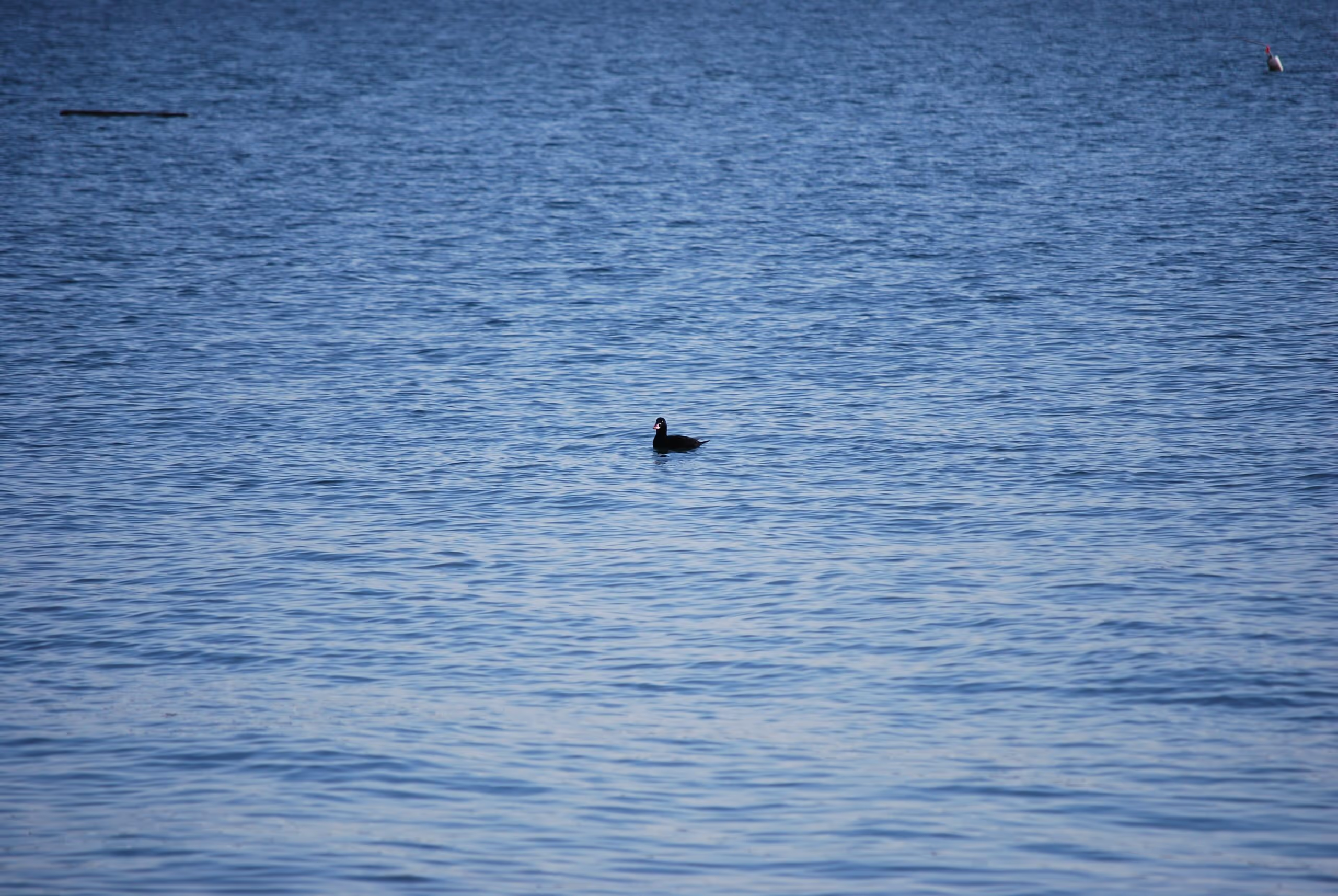Surf Scoters


Fall is zipping by here in our little piece of coastal paradise known as Ocean Shores. This means that old man winter can't be too far off. And when he does come knocking on our door (probably sometime in November or December), he won't just be bringing his usual bouts of cold, wind, rain, and snow with him. He'll also be bringing Surf Scoters to our coastline. Surf Scoters (scientific name Melanitta perspicillata) are a species of duck that spend their winters hanging out on the Pacific and Atlantic coastlines escaping the cold, ice, and snow of their summer home in Alaska and Northern Canada. In the winter months, they hang out in the ocean surf, in salt bays, and marinas. They trade those in during the summer for tundra, slow-moving rivers, and fresh arctic lakes.

Surf Scoters are “molt migrants”. This means that, after nesting, adults fly to places where they can safely molt their flight feathers. They briefly become unable to fly while the molting process is underway. Once the molting process is complete, they carry on to their wintering range. Some of their favorite molting locations in North America include sheltered waters from southeastern Alaska to Puget Sound, and the waters of Quebec and New Brunswick.
Surf Scoters forage for food by diving and swimming underwater. They are propelled mainly by their feat with their wings usually only halfway opened. Their diet primarily consists of mollusks. However, they also feed on aquatic insects, small fish, crustaceans, marine worms, and echinoderms. Additionally, they also eat some plant material, mainly sedges and pondweeds. Young Surf Scoters have a slightly different diet, as they mostly eat aquatic insects instead of mollusks. They also eat crowberries.
Surf Scoter pairs are formed on winter range. Several males may surround one female in courtship, with each male hoping to persuade the female that he is the one for her. The males go about this by swimming back and forth rapidly with neck stretched upward, making short display flights, and bowing in an exaggerated manner. Once a pair forms, they choose a nest site. The nest site is generally located on dry ground some distance away from water. It is well hidden under low tree branches or in dense grass clump to keep predators at bay. The completed nest, which is built exclusively by the female, is a shallow depression that is lined with down.
Surf Scoters typically lay about seven eggs. The eggs are Pale buff in color. Incubation of the eggs is handled exclusively by females. It is not known how long the incubation period runs for. Once the eggs hatch, the young waste little time in leaving the nest and going to bodies of water. While the young are tended to by their mothers, they have to feed themselves. On crowded lakes, young Surf Scoters will often switch from one brood to another. Because mother Surf Scoters provide no parental care other than guarding the chicks, evolutionary selection against such mix-ups is likely to be weak at best. It is not well known in the scientific community when young Surf Scoters make their first flight. However, since they have to grow up fast with their Mothers basically only serving as guards, it would be reasonable to assume that it happens fairly early in life.
Surf Scoters are medium-sized sea ducks with sturdy necks, unusually large heads (by duck standards), and broad, heavy bills. They are generally 18.9 to 23.6 inches (48 to 60 centimeters) long, weigh 31.8 to 45.6 oz (900 to 1293 grams), and have a wingspan of 29.9 to 30.3 inches (76 to 77 centimeters). Adult males are "jet black" in color. They have orange, white, and black bill and white patches at the nape, forecrown, and base of the bill respectively. Females are dark brown in color, with dark gray bills. They also tend to have two patches of white on their faces. The strong head pattern of male Surf Scoters has earned the species the nickname "skunk-head coot" in the hunting community.
It is believed that Surf Scoters went through a major decline in the twentieth century. However, the species is now largely stable or in a much smaller decline. You will most commonly see Surf Scoters in large flocks. They may be hanging out with all-dark Black Scoters and larger White-winged Scoters. Therefore, it is advisable to use a spotting scope when bird watching to help distinguish between the different species.
References
Photo by Tyler Jamieson Moulton on Unsplash
© Ian D. Caldwell, November 2020
Touch whale bones, examine shipwreck artifacts and connect with the coast's living history.

Support our mission, get involved in educational programs, or contribute through donations and volunteering.